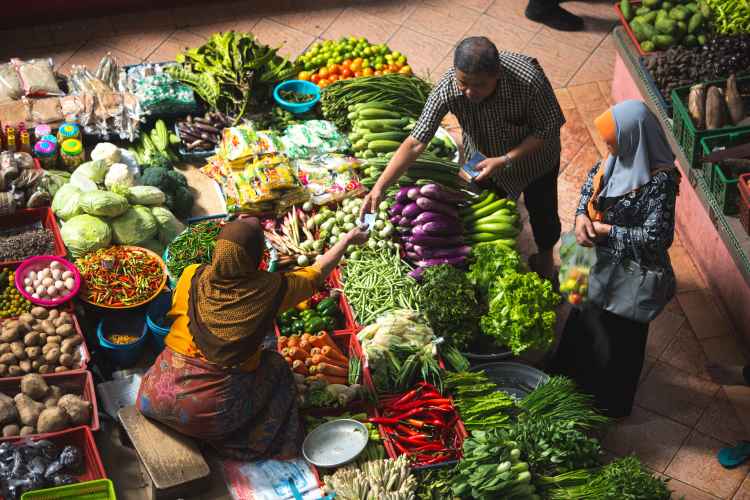
Persistent food inflation has become a big challenge for the Reserve Bank of India. RBI Governor Shaktikanta Das has made it clear that the government cannot overlook the mounting pressures of food inflation, given its substantial share in the consumption basket. As the central bank struggles to bring headline inflation within the target range, controlling persistent food inflation has become even more critical, especially considering its weight of approximately 46% the headline figure. “The public generally perceives inflation more in terms of food inflation than the other components of headline inflation,” he said on Thursday.
India’s inflation index is heavily influenced by food prices, as most people spend a significant portion of their income on food. Consequently, the MPC was compelled to leave the repo rate unchanged at 6.5% for the ninth consecutive time. While monetary policy can curb demand, it faces challenges in addressing supply-driven food inflation, as food demand is price inelastic. With food and beverages accounting for 46% of India’s Consumer Price Index (CPI) basket—far higher than in developed countries or even emerging economies like Brazil, China, and South Africa, where the weight ranges between 20-25%—India faces greater difficulty in managing inflation. Developed countries find inflation targeting easier due to the lower share of food in their inflation baskets.
READ | Migrant workers: Budget missed an opportunity to protect the invisible workforce
Causes of persistent food inflation
Food price pressures pose a significant headwind for an economy with high income inequality. India’s retail inflation rose to 5.1% in June, up from 4.8% in the previous two months. This increase was primarily driven by soaring food prices, particularly for vegetables, pulses, and edible oils. Vegetable prices, in particular, have experienced double-digit inflation for eight consecutive months. While the prices of cereals, milk, fruits, and prepared meals also increased, core inflation eased to a new low of 3.1%, leading to a growing divergence between core and headline inflation.
High food prices are largely attributable to the unpredictable nature of weather affecting food production and inefficiencies in the agricultural sector. For a country tasked with feeding the world’s largest population, it is crucial for the government, intellectuals, and the private sector to find solutions to India’s monsoon challenges. The unpredictability of the monsoon weighs heavily on the agricultural sector, and crop failures due to extreme weather events can disrupt the balance of supply and demand.
Despite the softening of core inflation, the government does not believe it is a cause for celebration. Food inflation accounted for more than 75% of headline inflation in May and June. While the MPC may have considered reducing the repo rate, it decided against complacency, given that core inflation has fallen significantly.
There are concerns about the future impact of high food prices. Persistent food price inflation can influence public expectations about future inflation. If these expectations materialise, it could lead to higher wage demands to offset rising living costs. Businesses might then pass on these increased labour costs to consumers through higher prices for goods and services. Such behavioural changes could result in overall inflation remaining sticky even after food inflation subsides.
Governor Das’s remarks on food inflation came shortly after the release of the Economic Survey for 2023-24, in which Chief Economic Advisor V. Anantha Nageswaran suggested excluding food prices from headline inflation. This suggestion is based on the notion that food prices are keeping CPI-based inflation high and are also contributing to the delay in interest rate cuts by the Reserve Bank of India. However, many economists disagree with the CEA’s approach, arguing that it is not appropriate for India.
RBI’s policy dilemma
The RBI expects inflation to remain elevated despite a potential short-term slowdown. The central bank has projected an inflation rate of 4.5% for the entire year. While the economy is growing at a healthy pace of 7.2%, the RBI remains focused on bringing inflation down to its target of 4%. To achieve this, the central bank will continue to adopt a cautious monetary policy stance.
Under the flexible inflation-targeting regime, the RBI must maintain CPI within the 2-6% range, with a target of bringing inflation down to 4% on a durable basis.
The government faces a delicate balancing act in managing food prices. While implementing measures like subsidised sales, stock limits, and export bans to control inflation, it cannot afford to compromise farmers’ livelihoods by preventing excessively low prices. This challenge is particularly acute given the impact of high food prices on vulnerable consumers.
